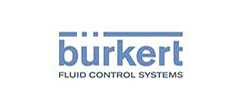GAS ANALYZER MANUFACTURER
Leading Supplier of Flue Gas Analyzer System, CO & O2 Analyzer System, Double Beam NDIR Analyzer, Single-Beam NDIR Analyzer and Thermal Conductivity Analyzer. They are widely used by the mining and petrochemical industries, and for landfill management, wastewater management, manufacturing and other applications.

Analyzing air pollution is the first step toward preserving a clean atmospheric environment.
Nuvision developed the first infrared gas analyzer in Japan to use mass-flow sensors. Since then, we have supplied customers with various types of gas analyzers to support environmental preservation and control efforts. These efforts include measurements of atmospheric pollution and detection of low density of SOx and NOx, generated by incinerating facilities and boilers. Nuvision gas analyzers are widely used to monitor the atmosphere to help maintain a cleaner natural environment with CE Marking
Operating principles:-
Double-beam NDIR gas analyzer :-The amount of infrared rays absorbed by a sample cell is detected by the mass flow sensor.
Single-beam NDIR gas analyzer :-The amount of infrared rays absorbed by a sample cell is detected by the mass flow sensor.
Zirconia oxygen analyzer :-Detects Oxygen concentration by measuring the EMF (electromotive force) generated between the electrodes in the inside and the outsife of the Zirconia element.
Paramagnetic oxygen analyzer I :-When the measured gas is placed in a magnetic field, oxygen molecules will be attracted. This gives rise to a pressure, which is detected by the mass flow sensor.
Paramagnetic oxygen analyzerII :-In the cell, two glass spheres filled with nitrogen gas are suspended with strong metal wire. When oxygen molecules having a large magnetic susceptibility flow there, the molecules are pulled toward the stronger magnetic field zone and the spheres are moved away from the zone. The resulting deviation of the spheres is detected with the light receiving element.
Thermal conductivity gas analyzer :-When there is a change in the concentration of the component under measurement, the thermal conductivity of sample gas will change to affect the temperature of the platinum wire in the measuring chamber. The resulting thermal change is taken out as a change in electric resistance, according to which the concentration of measured gas is calculated.



























